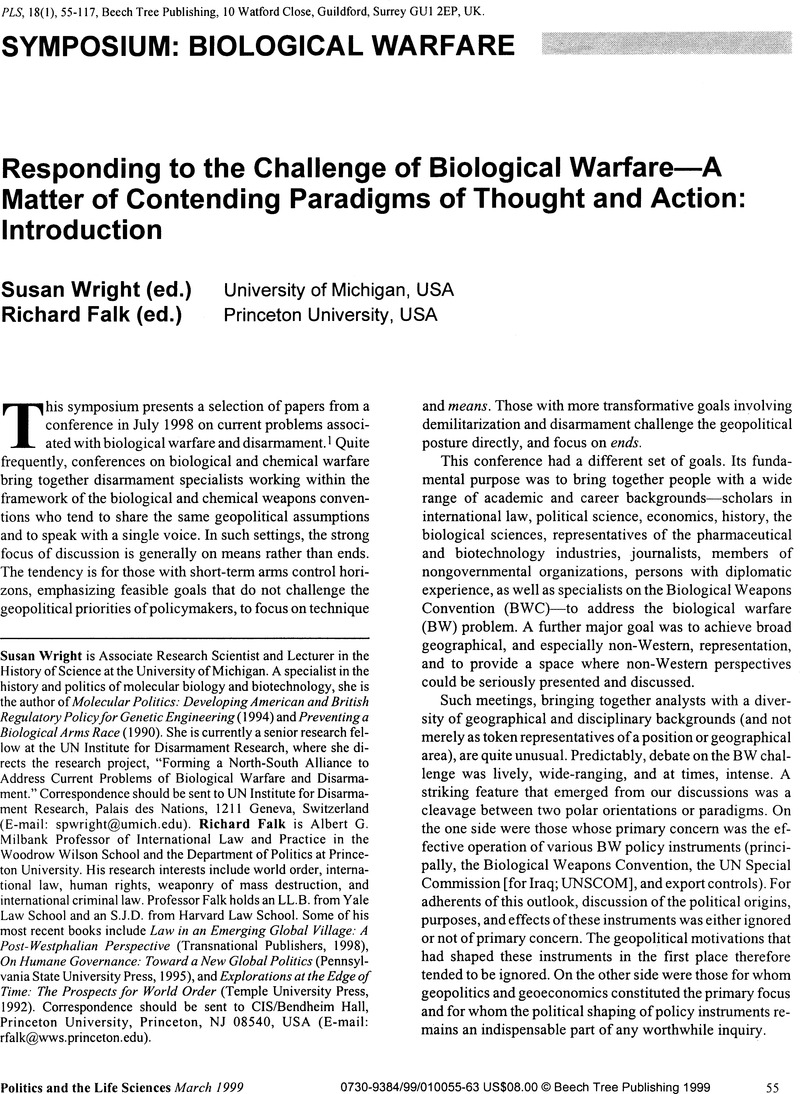Crossref Citations
This article has been cited by the following publications. This list is generated based on data provided by Crossref.
Nixdorff, Kathryn
2002.
Maximizing the Security and Development Benefits from the Biological and Toxin Weapons Convention.
p.
199.
Johnson, Gary R.
2011.
Politics and the life sciences:An unfinished revolution.
Politics and the Life Sciences,
Vol. 30,
Issue. 2,
p.
43.
Johnson, Gary R.
2011.
Politics and the life sciences:An unfinished revolution.
Politics and the Life Sciences,
Vol. 30,
Issue. 2,
p.
43.



